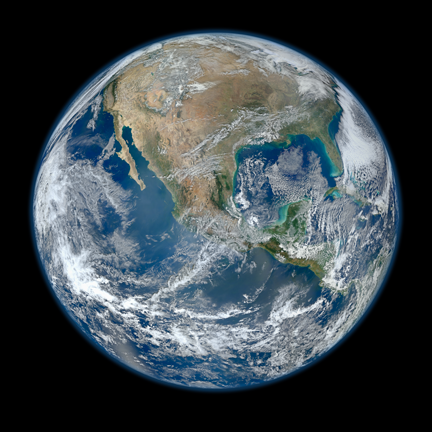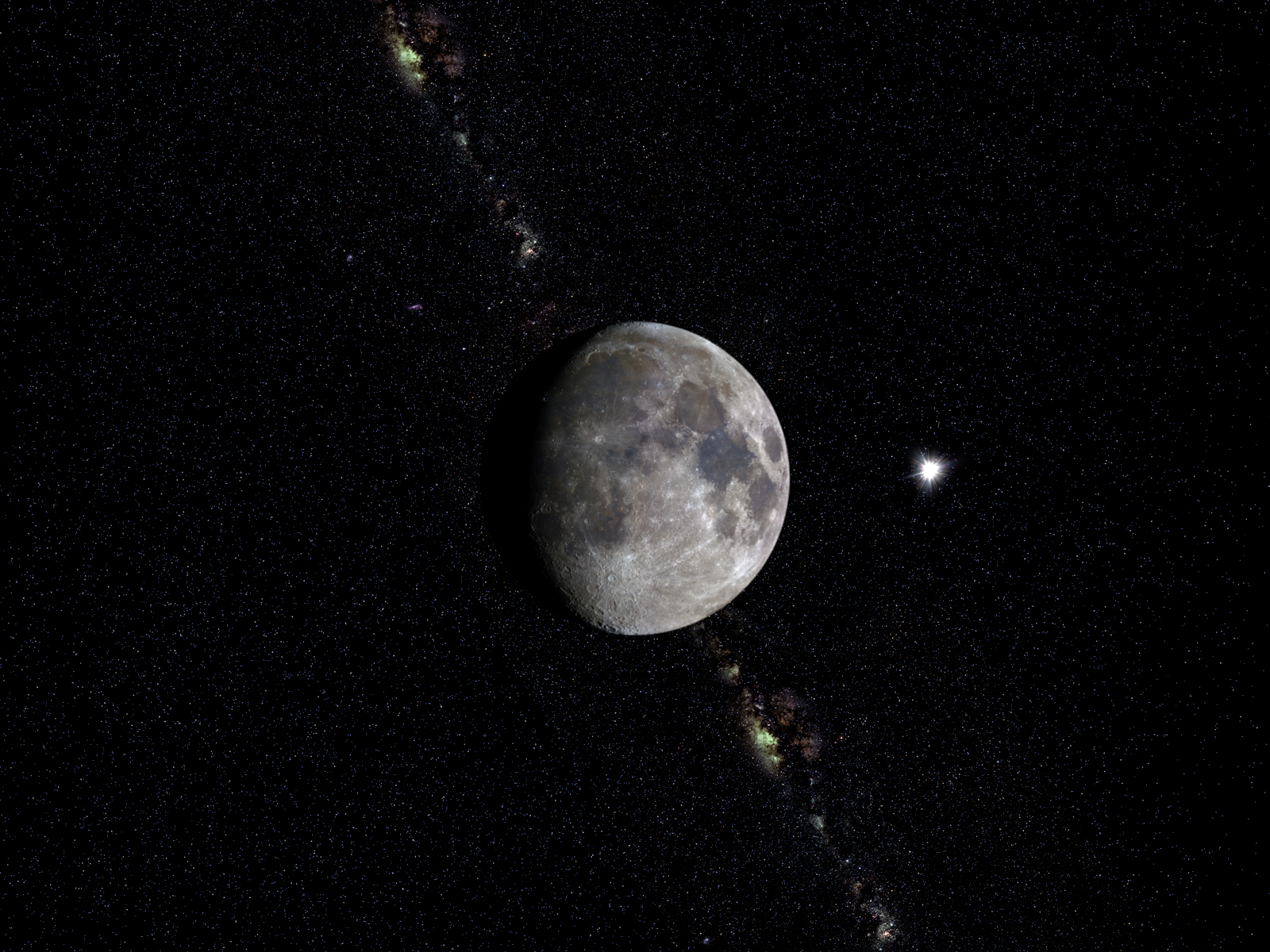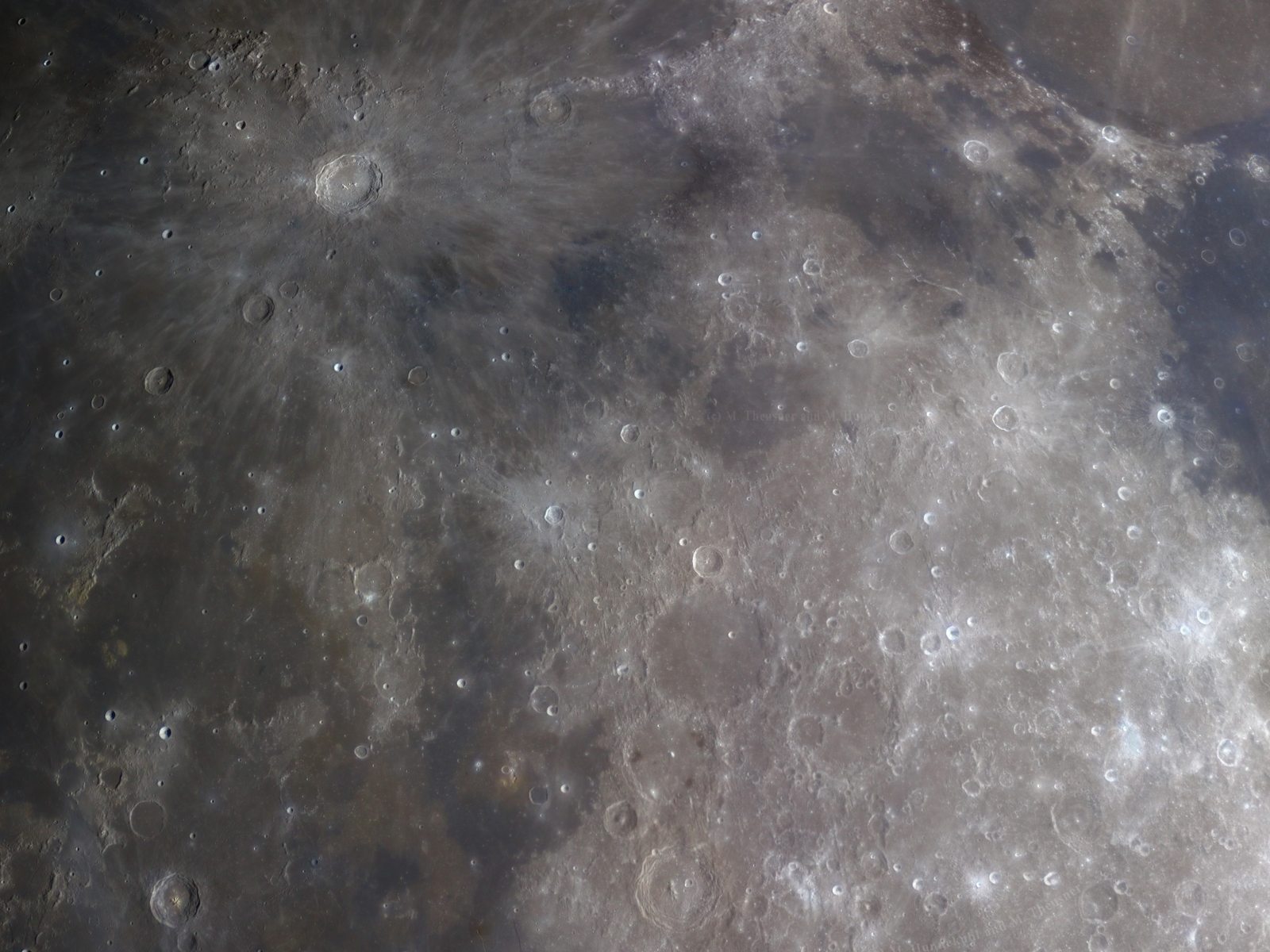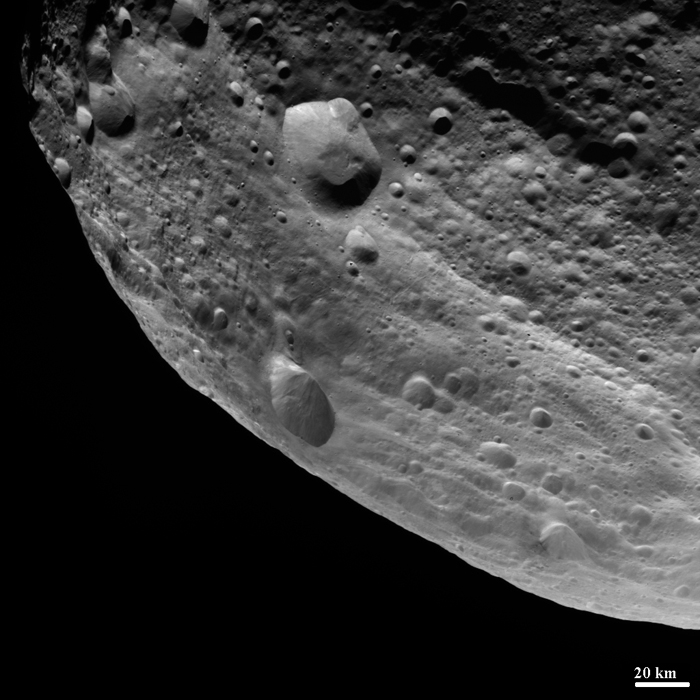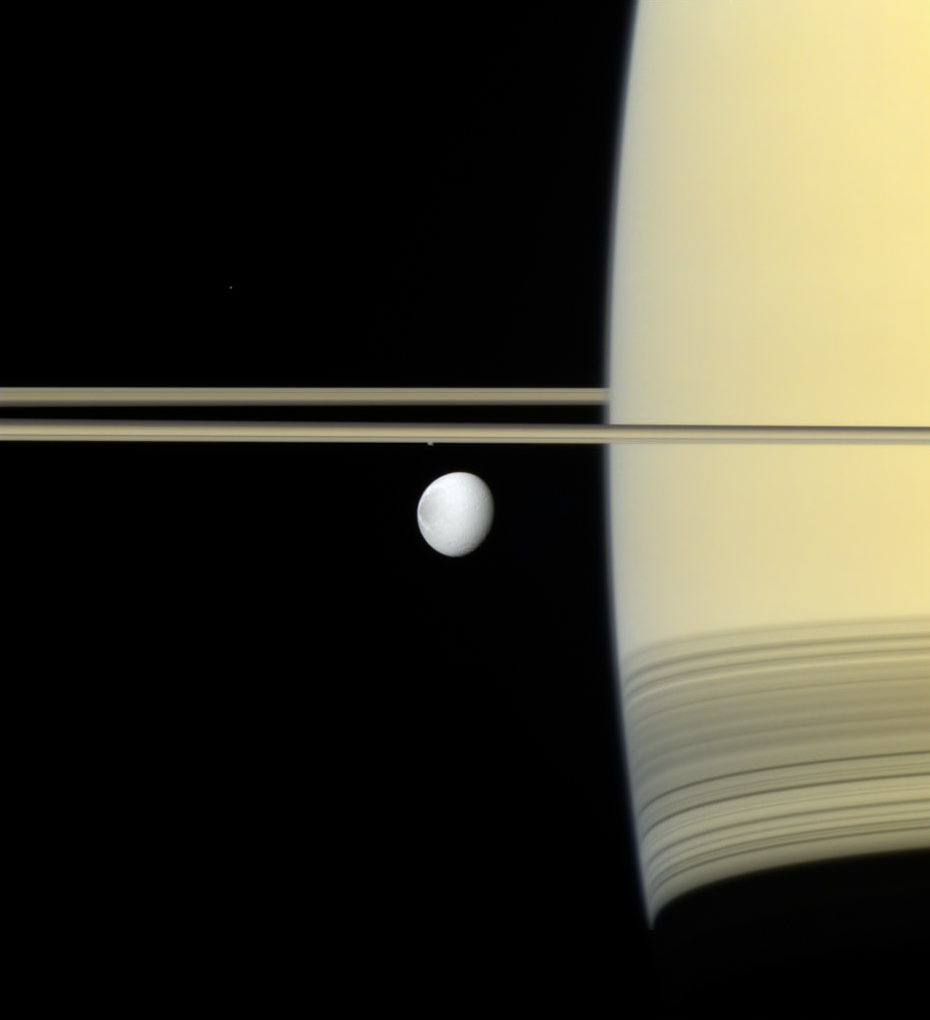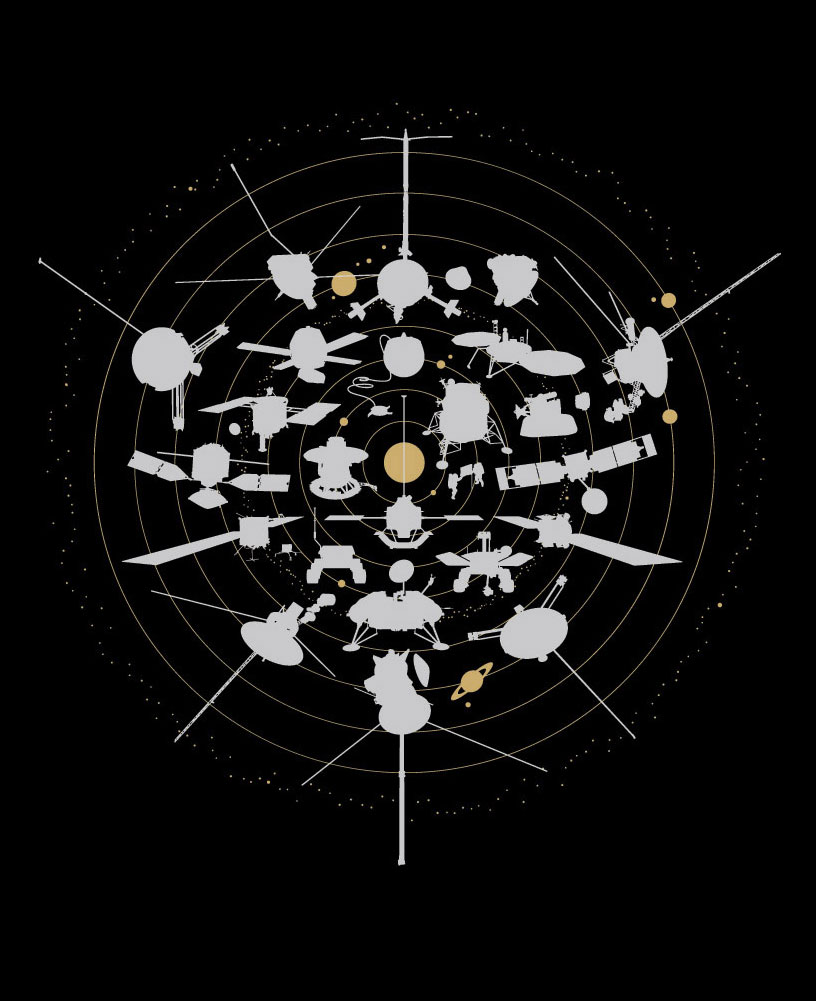 Chop Shop’s best selling Beyond Earth t-shirt is now available as a archival quality letterpress print. 23 historic missions of various nations orbit beyond Earth to explore our solar system. The missions are loosely arranged according to their most notable destinations. Printed on 19" x 25" French, Speckltone 80lb.
Chop Shop’s best selling Beyond Earth t-shirt is now available as a archival quality letterpress print. 23 historic missions of various nations orbit beyond Earth to explore our solar system. The missions are loosely arranged according to their most notable destinations. Printed on 19" x 25" French, Speckltone 80lb.
Enceladus in Saturnshine
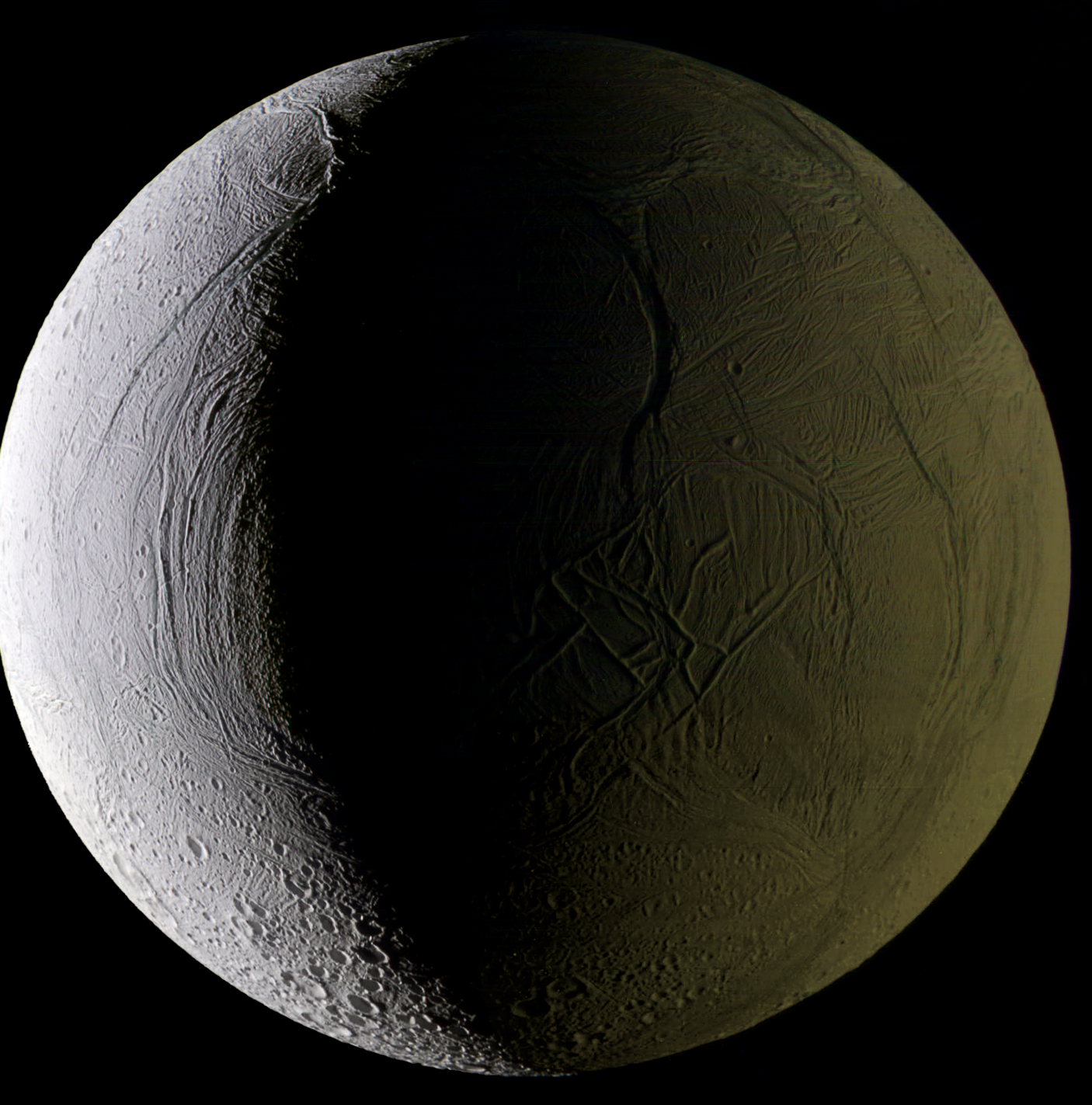
Ian Regan’s composite of the recent Enceladus flyby. Best yet image I have seen of Enceladus lit both by sunshine and light reflected off Saturn (aka Saturnshine).
Also the Gordan Ugarkovic image. Note the spewing geysers on the lower left.
Earth
Titan and Friends
Titan and friends from recent official Cassini mission releases.
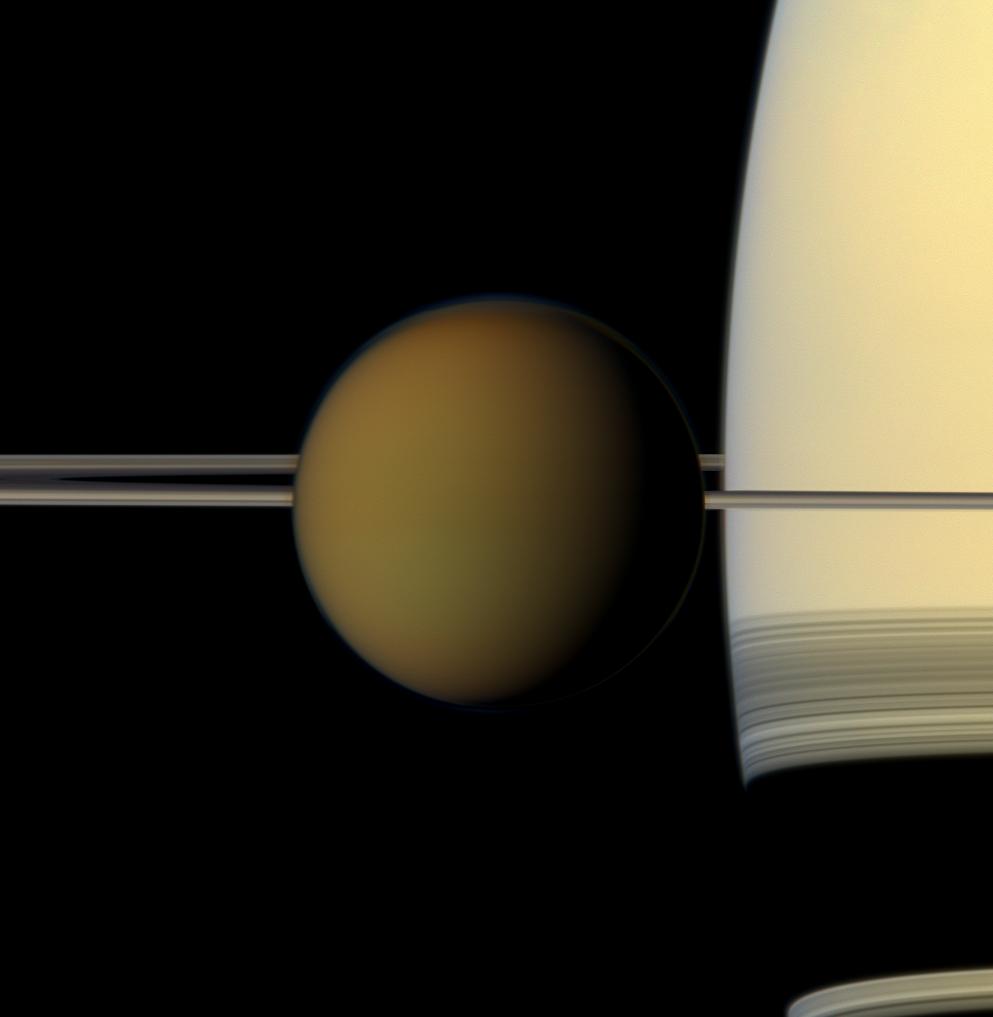
Shown with Saturn
Shown with Dione against a Saturn and rings nearly edge-on in the background. Looks like a NASA re-interpretation of this image.
With Tethys against more edge-on rings.
Best Color Image or Geysers on Enceladus
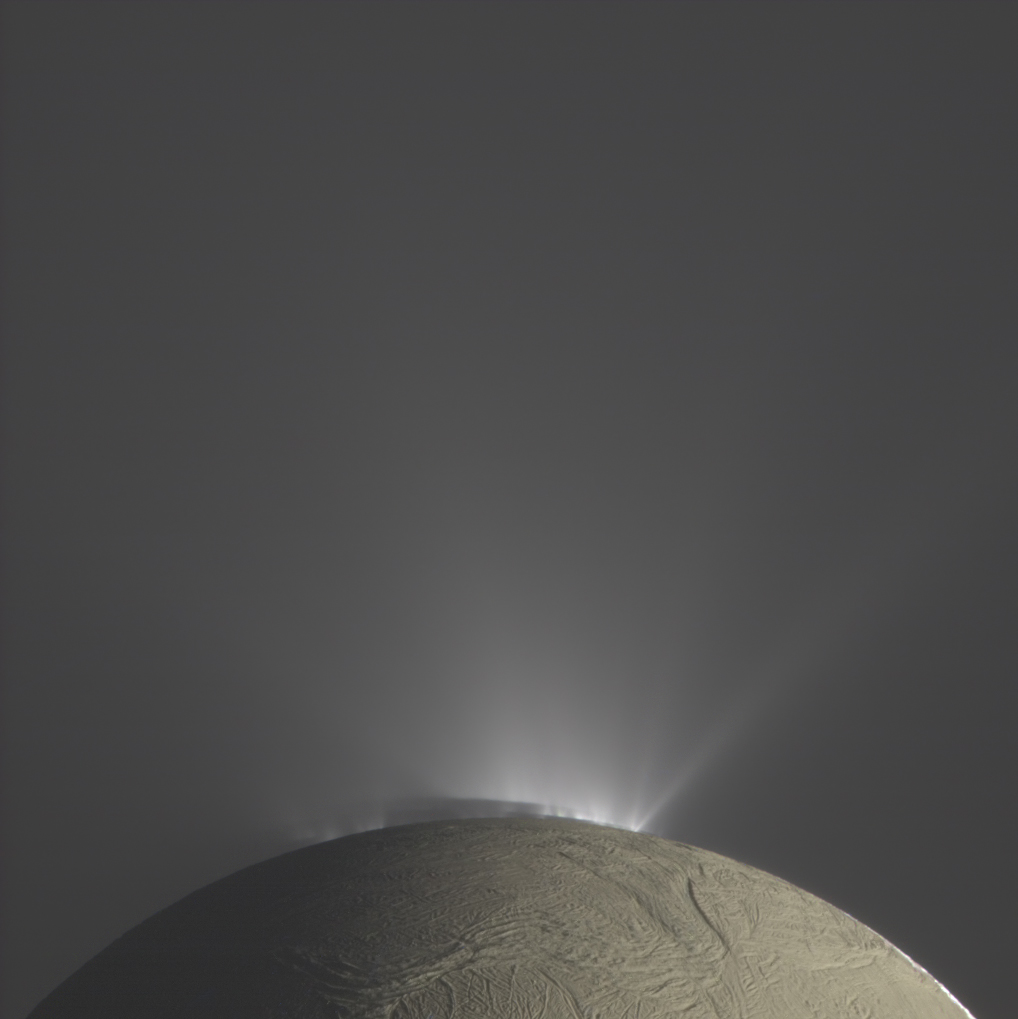 Brought (as always) to us from Gordan Ugarkovic.
Brought (as always) to us from Gordan Ugarkovic.
Curiosity Begins
I last wrote about this mission in 2007. Now it is actually upon us. So never mind the launch… what is remarkable about this trip is when it arrives. JPL commissioned this incredible animation that is so real you feel like it was videotaped live. This is expected to take place August of 2012.
The Greatest Time Lapse Video of Earth Ever
You Are the Center of the Solar System
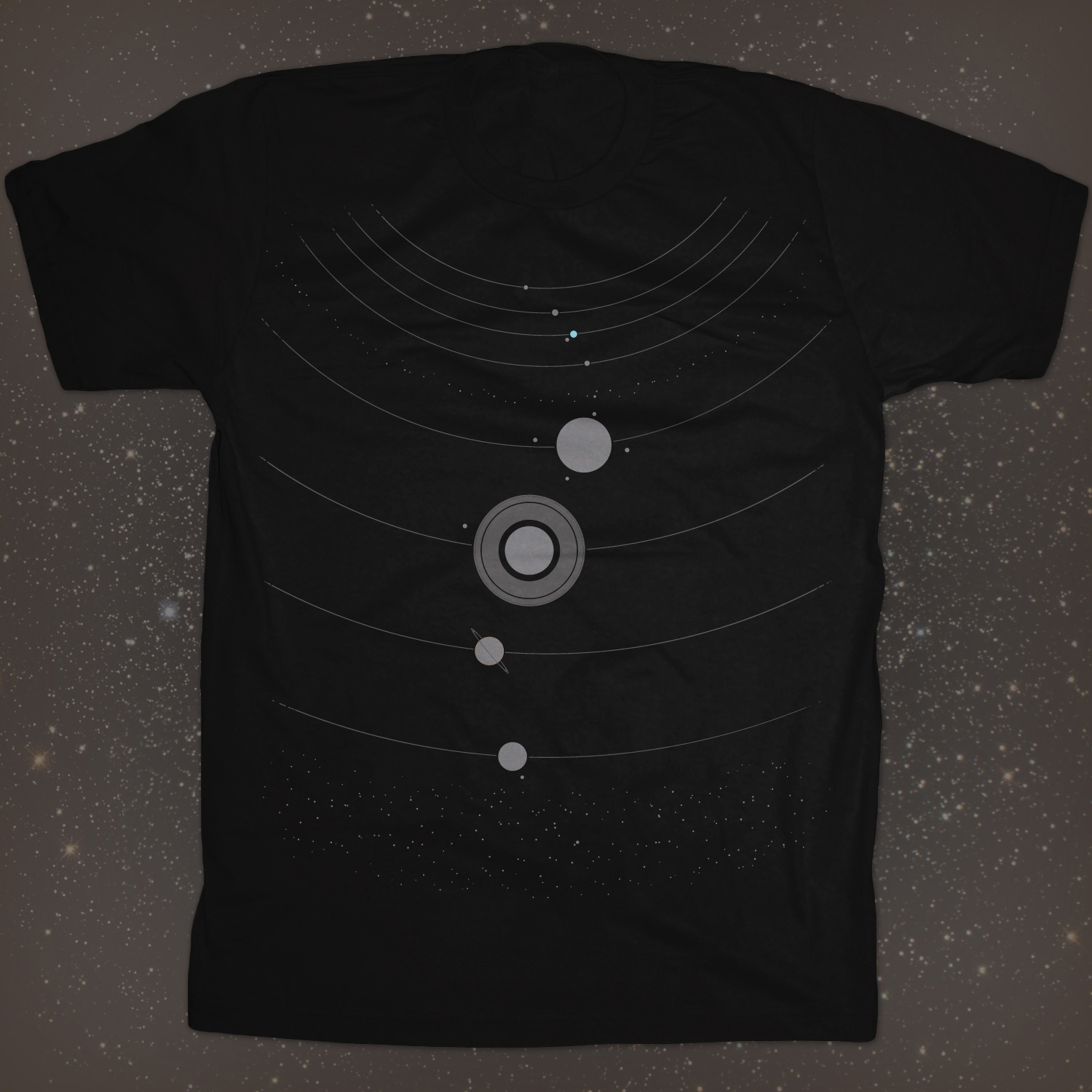 You Are The Sun is the latest space themed tee by Chop Shop Store. Following on iconic tees that collected various deep space missions and historic Earth orbit missions, this new design draws a new picture of The Solar System as we know it today, complete with Carl Sagan’s pale blue dot.
You Are The Sun is the latest space themed tee by Chop Shop Store. Following on iconic tees that collected various deep space missions and historic Earth orbit missions, this new design draws a new picture of The Solar System as we know it today, complete with Carl Sagan’s pale blue dot.

With your head as a stand-in for The Sun — the tee includes all 8 planets, 7 major moons, The Asteroid Belt and even details little Pluto lost among countless Kuiper Belt objects. We are now providing yet another link here to get it for Men on American Apparel 2001 or Tultex tees and for Women on American Apparel 2102 tees.
Ganymede Looking Better, Thanks Ted
 Another new near global image of Ganymede by Ted Stryk. He has been producing new views of this Galilean moon for a while now from the old Galileo image sets which were compromised by a glitch that effected the entire mission.
Another new near global image of Ganymede by Ted Stryk. He has been producing new views of this Galilean moon for a while now from the old Galileo image sets which were compromised by a glitch that effected the entire mission.
Deep Impact Animation with Deep Impact
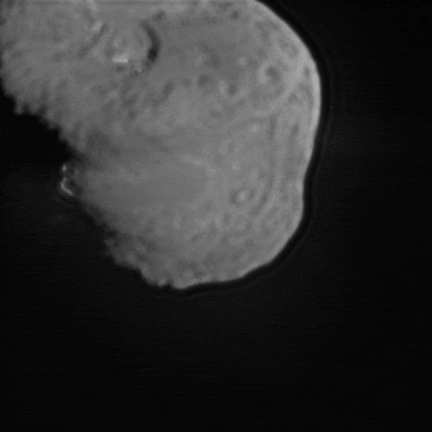 I just found this on Gordan Ugarkovic’s Flickr page. I just sped up the frame rate.
I just found this on Gordan Ugarkovic’s Flickr page. I just sped up the frame rate.
Another Sneek Peek at “Outside In”
 We have posted many images and preview clips for outsideinthemovie before. Here is another look at some preview stills from an opening scene to be unveiled at an event on Sept 17th in Austin, TX. Steven Van Vuuren — the film’s creator — tells us these images begin a pan out from Earth to the surface of the moon which culminates in a trip through the Solar System on the way out to Saturn.
We have posted many images and preview clips for outsideinthemovie before. Here is another look at some preview stills from an opening scene to be unveiled at an event on Sept 17th in Austin, TX. Steven Van Vuuren — the film’s creator — tells us these images begin a pan out from Earth to the surface of the moon which culminates in a trip through the Solar System on the way out to Saturn.
For those who may not recall, the film’s focus is on the Cassini Mission at Saturn and uses only real flat image photography returned from robotic spacecraft in a new technique developed by Van Vuuren that feels 3 dimensional. No renders will be employed and is therefore — a more realistic trip through interplanetary space than anything we have seen before.
Multiple Images of Vesta
 The Dawn Spacecraft has been orbiting at Vesta for some time now. Surely some great science, but visually we are looking at an object that reminds us very much of the Martian moon Phobos. And like so many of the smaller rocky bodies of the inner solar system — up close, most images could easily pass for Apollo images of our own moon.
The Dawn Spacecraft has been orbiting at Vesta for some time now. Surely some great science, but visually we are looking at an object that reminds us very much of the Martian moon Phobos. And like so many of the smaller rocky bodies of the inner solar system — up close, most images could easily pass for Apollo images of our own moon.
However, there are some things we haven’t seen very much of on rocky surfaces like Vesta. Dark and light ejecta material reminds us more of what we see at Iapetus and Hyperion (both Saturnian moons) — which are largely moons of ice.
The grooves which nearly reach all the way around Vesta are very similar to the grooves found on Phobos (a rocky Martian moon). Many scientists believe those lines came from the cataclysmic event that formed Stickney Crater which nearly shattered the small moon, but instead left behind rippled scars as gravity pulled it all back together. Similarly, an enormous crater at the Vesta's south seems to correspond to these multiple ridges.
Dione and Saturn
Another Dark Side of Titan
Juno is on the Way to Jupiter
 Juno is the first mission to study Jupiter since Galileo in the 90s and will arrive around July of 2016. The new imaging event on this encounter will be seeing the poles of Jupiter for the first time in great detail. The camera fitted to Juno are specifically for public consumption and promotion and less about science. It will be nice to have an instrument specifically dedicated to securing amazing images.
Juno is the first mission to study Jupiter since Galileo in the 90s and will arrive around July of 2016. The new imaging event on this encounter will be seeing the poles of Jupiter for the first time in great detail. The camera fitted to Juno are specifically for public consumption and promotion and less about science. It will be nice to have an instrument specifically dedicated to securing amazing images.
Io & Europa Image Upgrade
We posted a similar image of an Io and Europa mutual event from the New Horizons mission a few years back when it zipped past Jupiter on its long journey to Pluto. Our hero of freelancer image compositing Gordan Ugarkovic now presents to us a much better view.
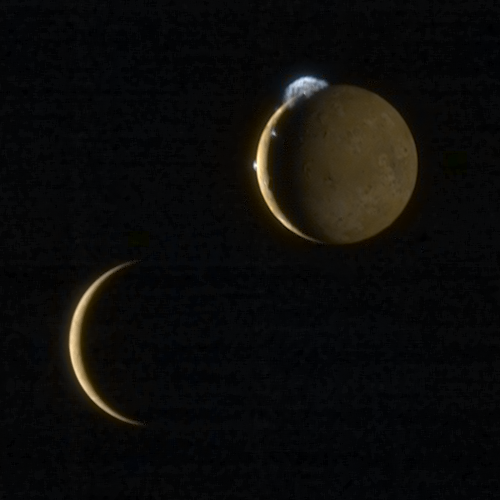
I count at least 4 if not 5 active eruption on Io in this version. The level of detail improvement from the same encounter is amazing. Old missions keep getting newer.
The Last Awesome Image Taken of a Shuttle in Space
Vesta as Seen by Dawn July 9
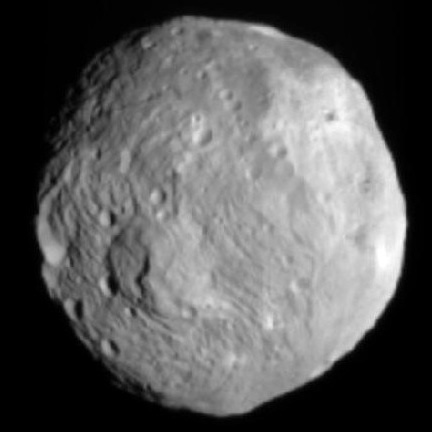 Apparently Dawn has achieved an orbit around Vesta. There was some concern that it would even be possible considering Vesta’s weak gravitational pull. This is the first time an object has been placed in orbit around an object in the Asteroid Belt.
Apparently Dawn has achieved an orbit around Vesta. There was some concern that it would even be possible considering Vesta’s weak gravitational pull. This is the first time an object has been placed in orbit around an object in the Asteroid Belt.
Saturn Cloudtops and The Fountains of Enceladus
 Wow. That is quite a mutual event. Saturn crescent haze about as dramatic as it is ever seen by Cassini but with the addition of an active Enceladus hanging above at such a scale is quite unreal. Color by Gordan Ugarkovic.
Wow. That is quite a mutual event. Saturn crescent haze about as dramatic as it is ever seen by Cassini but with the addition of an active Enceladus hanging above at such a scale is quite unreal. Color by Gordan Ugarkovic.
Saturn Portrait Rings Unlit
 We have had our share of global Saturn portraits, but I do believe this is the first taken where the rings are unlit by the sun. An interesting alternate view provided by Gordan Ugarkovic (as usual).
We have had our share of global Saturn portraits, but I do believe this is the first taken where the rings are unlit by the sun. An interesting alternate view provided by Gordan Ugarkovic (as usual).

